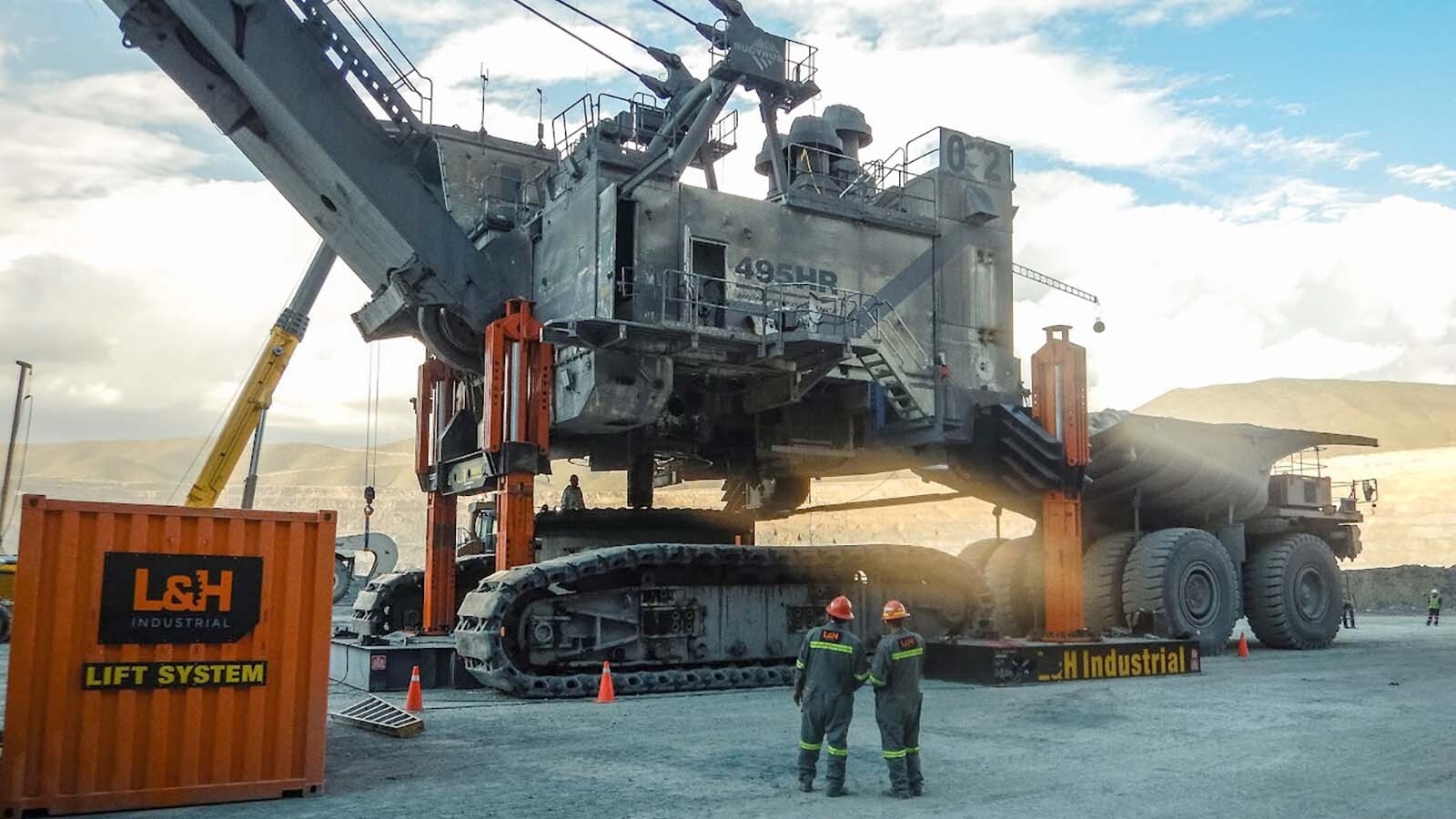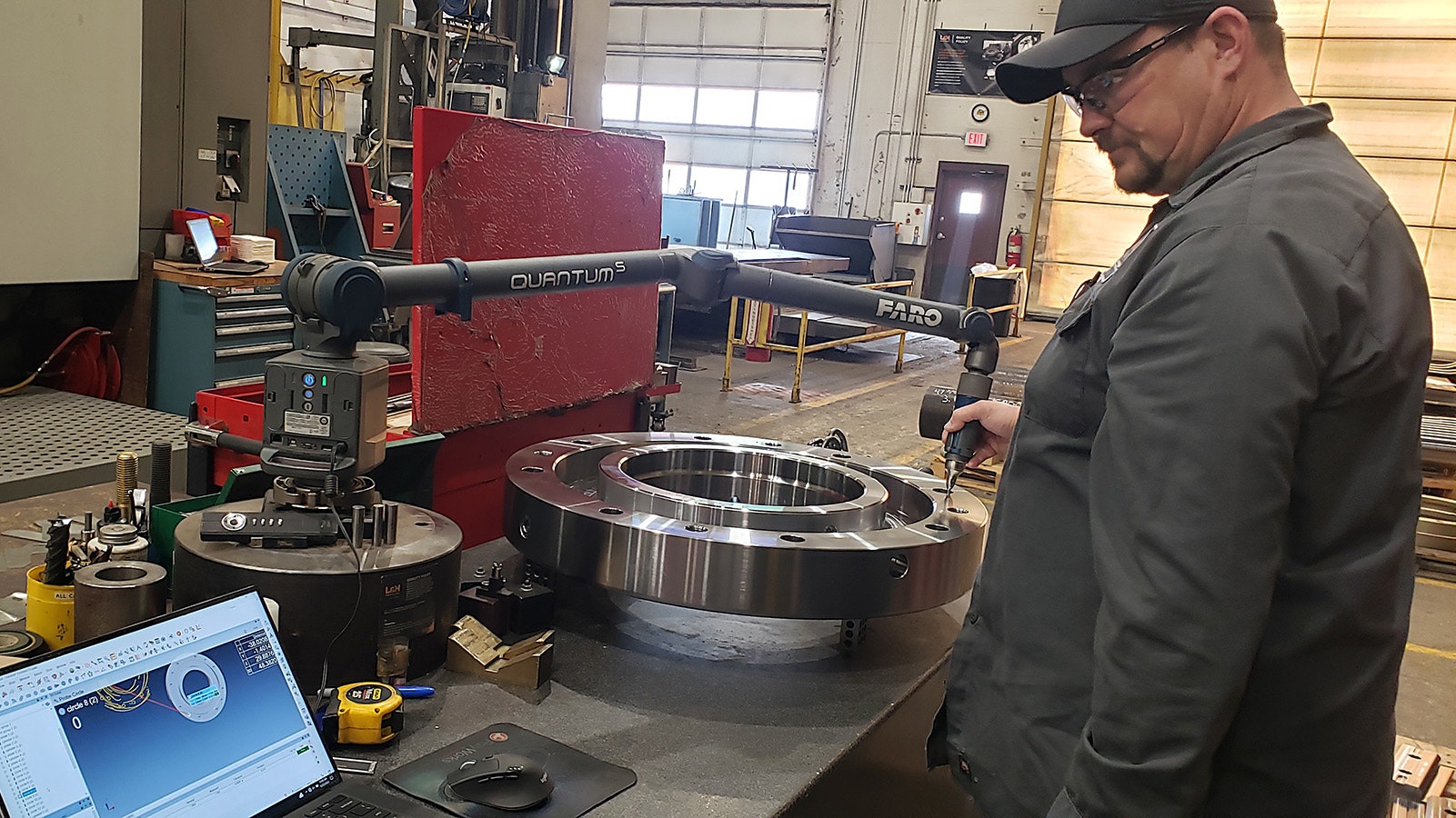Mining asteroids is an old idea that’s getting a new look lately with the costs of putting a payload into space dropping more than 20-fold.
That drop in costs has put stars in the eyes of at least some investors, who are laying down millions of dollars to boldly chase what once was the realm of science fiction — mining precious metals from space asteroids.
Say “mining” in Wyoming, where it’s frankly easier to list what isn’t mined than what is, ears perk up.
In fact, not so very long ago the Wyoming Mining Association invited University of Wyoming alumnus and sometime television host for National Geographic and the Weather Channel, Ben McGee, to talk about mining asteroids from space.
“I would say it’s a pretty intriguing concept,” Wyoming Mining Association Executive Director Travis Deti told Cowboy State Daily. “And I don’t think it’s very far from reality, if you can, you know, figure out the cost and the logistics to get it done.”
Whether Wyoming mining companies would then jump into becoming space mining pioneers is something that remains to be seen, but the Cowboy State already has some ties to name-brand space efforts.
L&H Industrial in Gillette, for example, built and assembled 1,300 parts for a NASA space shuttle.
There’s a Mars connection, too, Deti said.
“When the Mars Rover went up a few years back to do its thing on the surface of Mars, they used Wyoming bentonite to simulate the surface of Mars,” he said. “I don’t know if a Wyoming company specifically would (mine asteroids), but you might have a company based in Wyoming that could have some interest.
“The big thing is, you have to get to space first, and that could be from anywhere in the United States.”
The Cost Of Spaceflight
Getting to space has become much easier of late.
When NASA retired its space shuttle program in 2011, the cost of sending a pound of payload into space was upward of $30,000. A single shuttle mission, meanwhile, cost more than $1 billion.
But companies like Elon Musk’s SpaceX and Richard Branson’s Virgin Galactic have been actively carving out new capabilities, like reusable rockets.
Such efforts are dramatically lowering the price of getting to space. SpaceX now lists costs of around $1,300 per pound of payload. That’s up 8% from its previous $1,200 cost due to inflation, but it’s still a 23-fold drop overall in what it costs to send things to space.
That, more than anything else, has emboldened companies like California-based AstroForge to start sending things up into space to see what they can do to get at precious metals that could be worth billions.
A rather small asteroid of 100 yards in diameter, for example, could contain upward of $195 billion worth of material, according to McGee’s breakdown in 2016.
That’s $65 billion in recoverable water that could be processed into rocket fuel, and $130 billion in nickel, iron and platinum metals.

Space Is The Final Laboratory
Nickel, iron and platinum are not the only materials asteroids might offer Earth one day. Space is a unique laboratory, where things happen naturally that likely won’t ever happen at commercial scale on Earth.
Take a lava-hot chunk of burning iron and nickel, for example, cooling off very slowly over millions of years as it hurtles through space. That slow cooling — a degree or two every million years in zero gravity — is key to a unique tetragonal pattern of interlaced kamacite and taenite.
Tetrataenite has, let’s say, a quite magnetic personality. In fact, it could make a far better magnet than rare earths, making it particularly appealing for today’s electronic gadgets like disk drives, cellphones and, yes, electric car batteries.
Until 2022, tetrataenite was unique to asteroids and couldn’t be synthesized in a laboratory. While a group of researchers thinks they may have cracked the code with a process involving phosphorous, their method has yet to be proven at commercial scale.
Tetrataenite, though, isn’t the only mineral that’s been unique to space asteroids or meteorites, as they’re known when they come to down to earth.
California Institute of Technology researchers, for example, have identified 32 new minerals in a survey of meteorites. These include things like the recently identified stolperlite, a cubic alloy of metallic aluminum and copper that presently forms only in space.
What’s fun about the stolperlite is that a copper atom sits in the center of eight aluminum atoms in each of eight corners in three-dimensional space, while the reverse is true for each aluminum atom. They sit surrounded by eight copper atoms.
Thirty-two new minerals may just scratch the surface. The International Mineralogical Association lists 430 new minerals discovered in meteorites so far, suggesting there is a healthy horizon of unique materials awaiting us in space.
Baby Steps
AstroForge faces a steep learning curve in its endeavor to mine anything from an asteroid, and it’s taking the equivalent of baby steps right now, including the occasional tumble.
It’s first space-bound device, a 25-pound unit about the size of a kitchen microwave, hitched a ride on a rocket last April 15 with a mission to simply demonstrate its concept of refining metals in space.
Unfortunately, the company had trouble identifying its device from about 50 others up in space. Then the solar-powered baby ran into further troubles when a magnetic field generated by its metal refinery system interfered with orienting the device’s solar panels to the sun.
It’s now a race against time to demonstrate anything before the satellite becomes immobile. Company officials, meanwhile, said they expected that particular mission to be a learning experience and that the difficulties have already informed and improved planning for a second mission.
That will be a flyby of an as-yet-undisclosed asteroid with the main goal being to capture high-resolution images of the asteroid’s surface. That will help the company determine if the asteroid is a worthwhile mining target.
The payload for the next mission is dubbed Odin and it weighs a bit more than the first mission at 220 pounds. The plan is for it to hitch a ride on a rocket that’s headed to the moon sometime this year. Odin will peel off midway to the moon, heading out instead to deep space. The goal is for it to reach its target sometime in 2029.
That puts it ahead of NASA’s timeline to reach the 16 Psyche asteroid in the asteroid belt, a diffuse cloud of asteroids that orbits the sun just beyond Mars. If successful, AstroForge would be the first entity pull off such an ambitious mission.
Finders Keepers?
Keeping what’s mined from space is an area of international debate. The U.S. passed a law in 2015 that said companies may keep what they mine from space. Luxembourg, which is a member of the European Union, has adopted the U.S. position, likening space miners to fishermen who may keep the fish they catch from nets cast in the sea. They even took a major stake in the now defunct Planetary Resources, which was backed by Google cofounder, Larry Page, in a bid to set up a European hub for space mining.
Other countries appear to be taking their own approaches to the idea of space mining, in light of America’s stance. Japan, for example, spent $150 million bringing back an asteroid sample. Russia and China have agreed to collaborate on lunar mining missions, and the United Arab Emirates has passed its own laws for space mining, and plans to launch a mission flying by six asteroids in 2028.
Whether economies of scale ever kick in to the point that mining from space is actually competitive with mining on earth is something many in Wyoming’s mining sector see as unlikely in anything at all like the near term.
Wyoming mines, for example, has posted an entire paper downplaying the idea as the fantasy of billionaires whose pocketbooks won’t be hurt by failure. They’re not the only Wyoming company questioning the likelihood of space mining.
“I do not think it will be competitive with earth’s sources of the same materials.,” L&H Industrial’s President Mike Wandler told Cowboy State Daily in an email. “I don’t have a scarcity mindset. There’s plenty of these materials on earth that we have yet to mine.”
But Wandler still sees the idea of learning to mine and process in space as valuable, particularly when it comes to space travel and eventual colonization of other planets.
Why Go To Space At all
Space flight has long held a spot in human imagination as that final frontier.
Exploring space has led to groundbreaking discoveries, created new opportunities and been a source of American pride.
Science fiction authors, meanwhile, have long pointed out that space travel might one day be humanity’s only hope of survival, given that astronomical observations suggest our sun one day becomes a red giant 4.5 billion or so years from now. Long before that, however, it will expand and become much hotter than life on Earth can withstand, eventually even consuming those planets closest to it, perhaps even Earth.
Asteroids contain a wide range of valuable metals and minerals — nickel, iron, magnesium, water, oxygen, gold, platinum — that could be used to economically build space habitats that would support long-term missions like a colony on Mars, something that Elon Musk has said he’s aiming to do, and could support a space-faring humanity one day, if it ever comes to that.
Economics Are Ever-Changing
The French have a saying dating back to 1849 that the more things change the more they stay the same.
Economics is one such area of change. History has shown us that processes that once were exorbitantly expensive become much less so over time. New discoveries, economies of scale kick in, and what was once unthinkable and surreal becomes real.
Asteroid mining could well be one of those things in 40 to 50 years, providing a source for some of earths rarest and costliest of metals — iridium and platinum — or minerals that form at scale only in space, which might have as yet undreamed of potential.
In that case, a future where asteroid mining provides materials to Earth could make things more complex, Wandler said.
“On one hand, introducing large quantities of previously rare materials like platinum could significantly decrease their market value on Earth,” he said. “On the other hand, the high cost and technical challenges associated with asteroid mining might keep these materials relatively scarce and expensive.”
The final outcome would all depend on the scale of such mining operations, the efficiency of both their extraction and transportation methods, and the overall future market demand for the materials.
If and when asteroid mining becomes feasible, Deti is more than ready with the red carpet in Wyoming.
“I would certainly welcome aspiring asteroid mining companies to join the WMA,” he told Cowboy State Daily.

Renée Jean can be reached at renee@cowboystatedaily.com.







